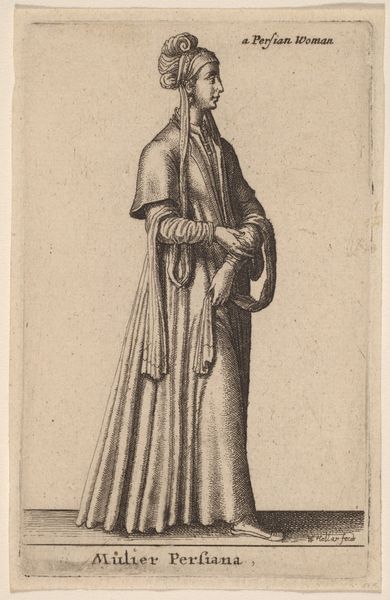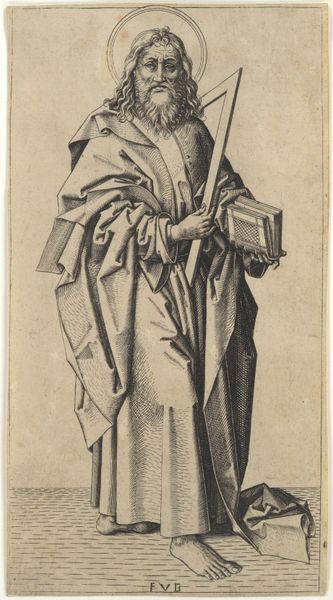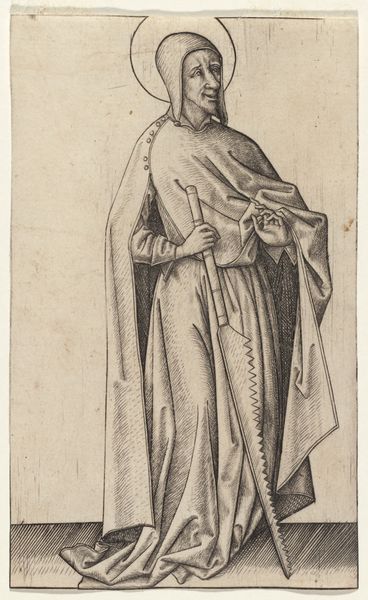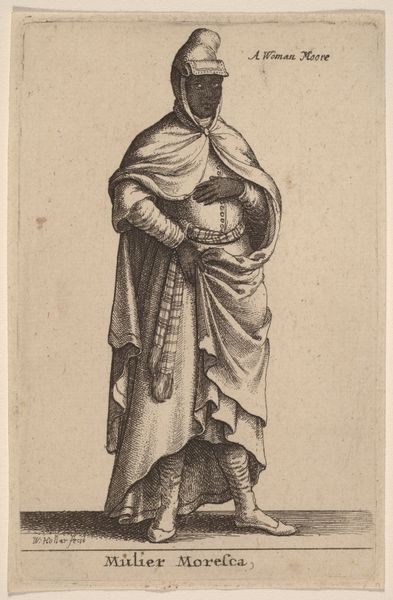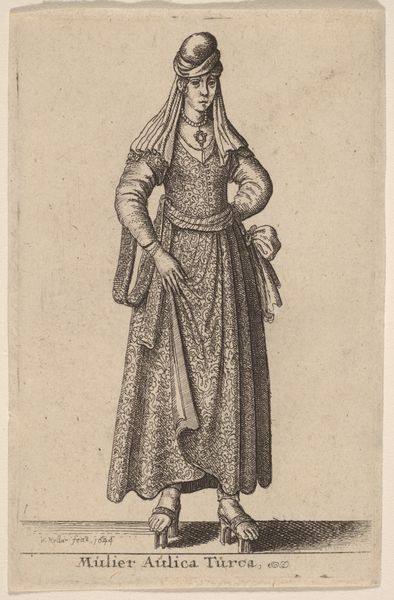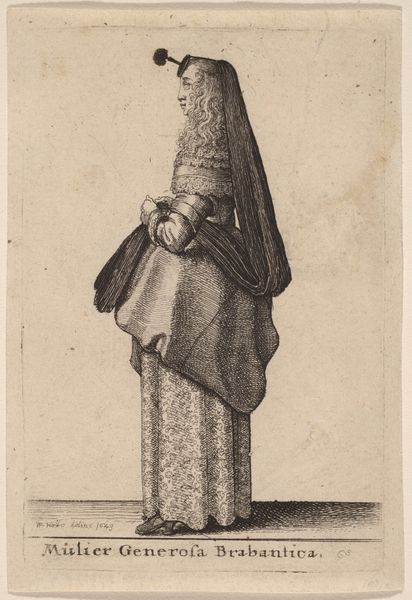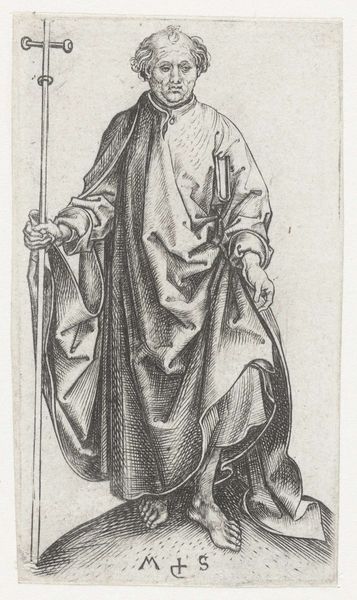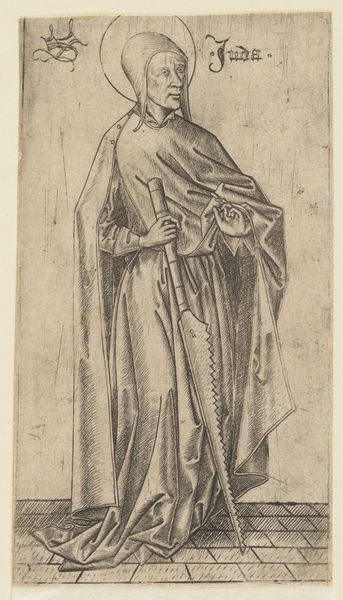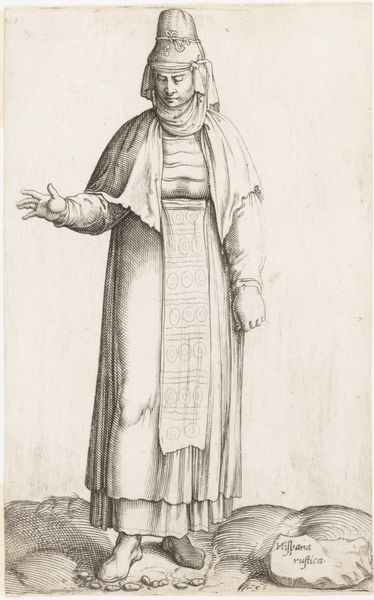
print, engraving
#
portrait
#
baroque
# print
#
figuration
#
portrait drawing
#
history-painting
#
engraving
Copyright: National Gallery of Art: CC0 1.0
Editor: So, here we have Wenceslaus Hollar’s "Mulier Hebrea in Tracia," an engraving from 1644. The woman’s patterned dress and head covering are just incredibly detailed. She seems to be gesturing outwards, almost as if offering something. What do you see in this image, especially with its historical context? Curator: Immediately, I'm drawn to the semiotics of dress, a visual language deeply embedded in cultural memory. Hollar’s rendering points to a fascination with the Other, with attempts to fix identity through costume. Consider the title: "Hebrew Woman in Thrace" - how does it frame our reading? Is it anthropological observation, or something else entirely? Editor: I guess I hadn’t considered the layers of interpretation added just by the title. I was mainly seeing it as a historical portrait, almost like a fashion plate. Curator: Precisely! And within those patterned fabrics, we might discern coded symbols or references understood at the time, now somewhat obscured. Her gesture, that slight outward presentation, could be inviting conversation or signifying a specific role within her community. It speaks to enduring themes – of cultural exchange, representation, and the gaze. What do *you* feel she’s offering us? Editor: Perhaps a glimpse into a world both familiar and distant. I realize there’s more to it than just a pretty dress. Thanks, I’m looking at it with new eyes now! Curator: And hopefully, with renewed curiosity about how we interpret symbols and project our own meanings onto the past. The image becomes a mirror reflecting not just her, but ourselves.
Comments
No comments
Be the first to comment and join the conversation on the ultimate creative platform.

